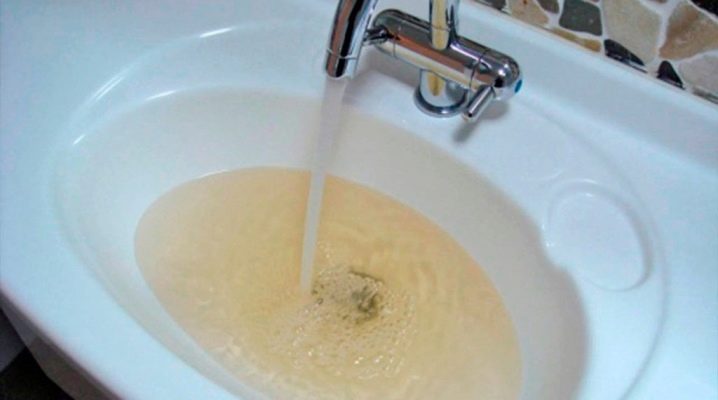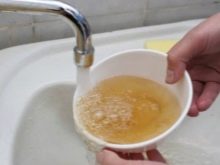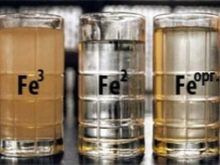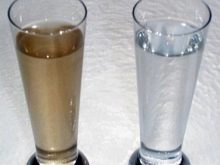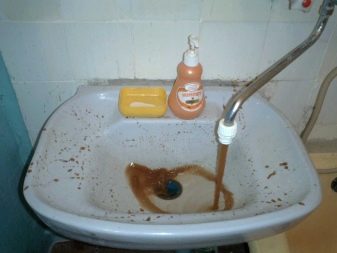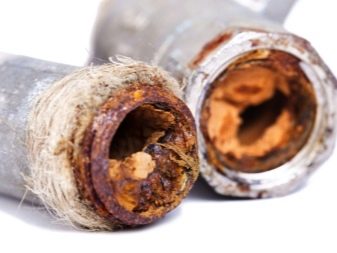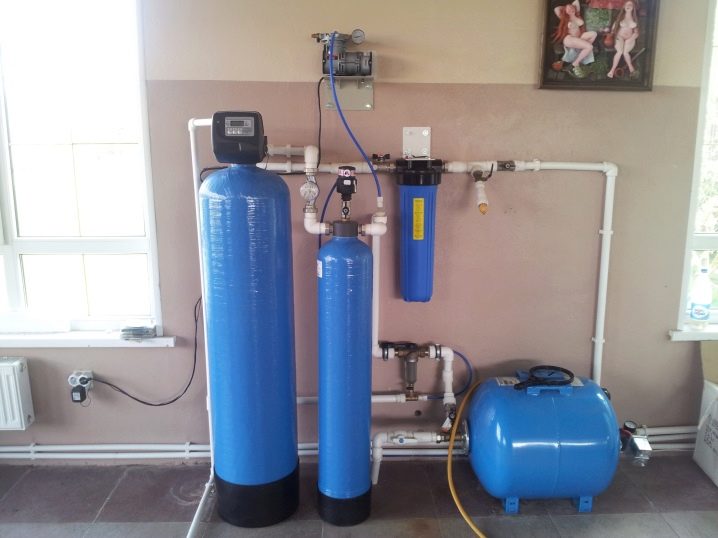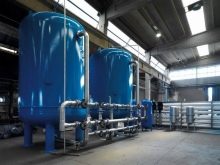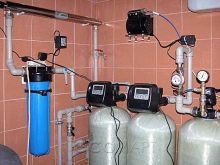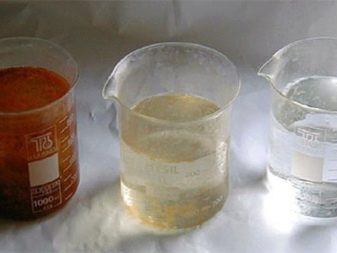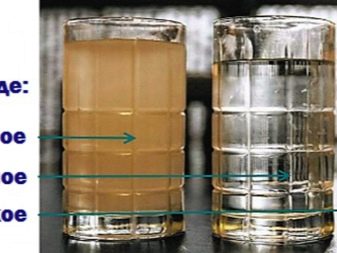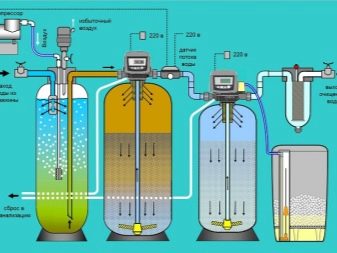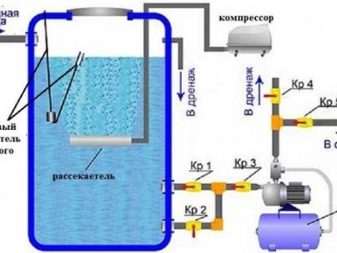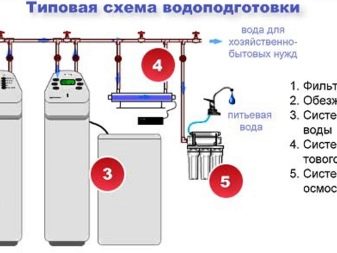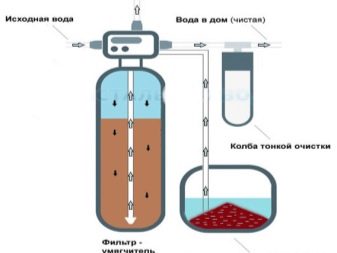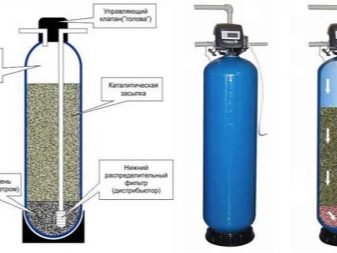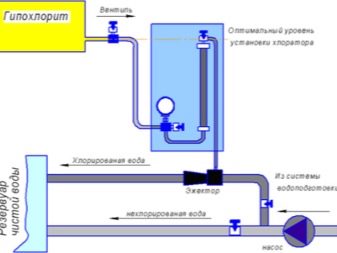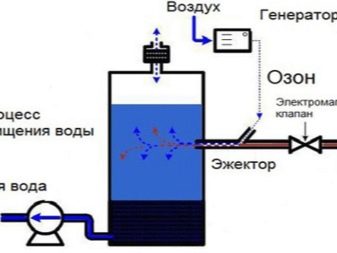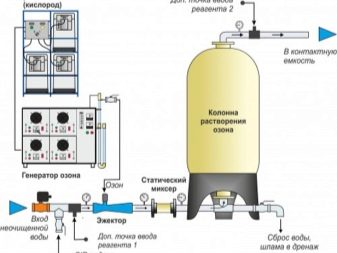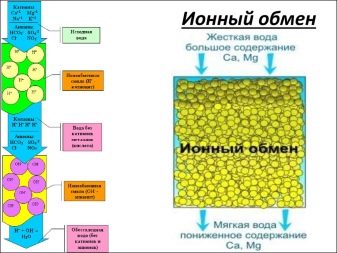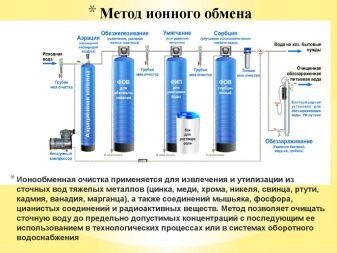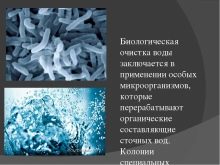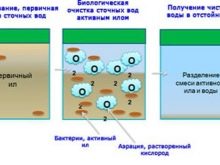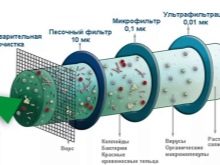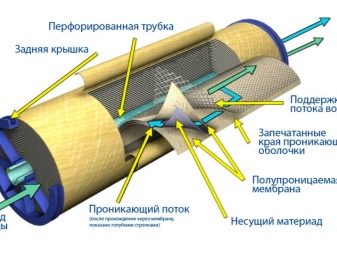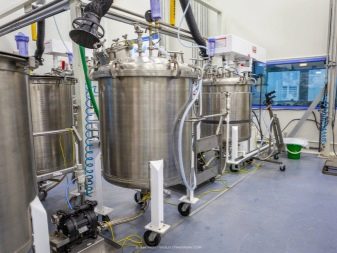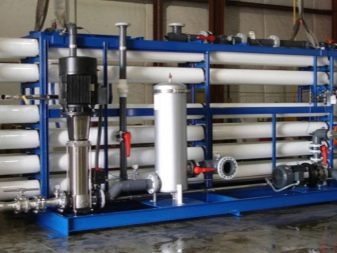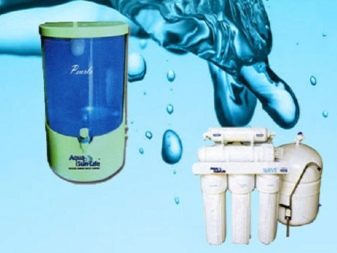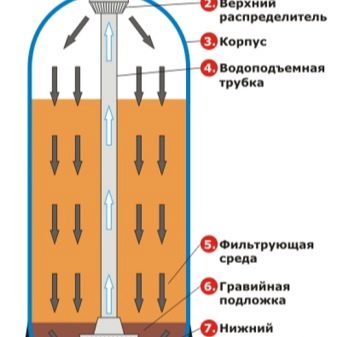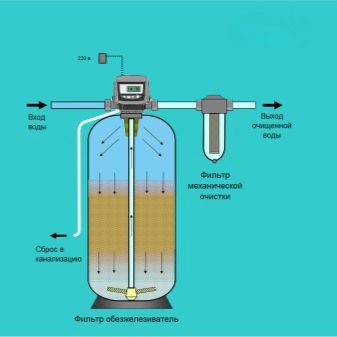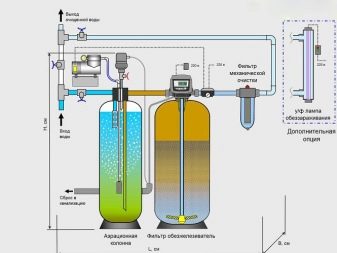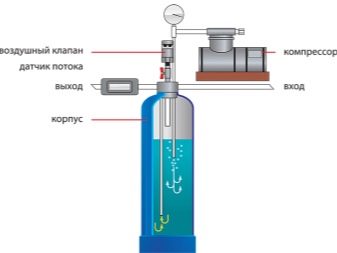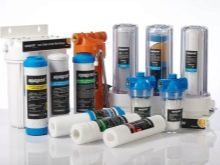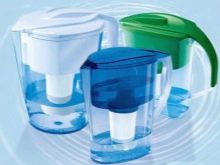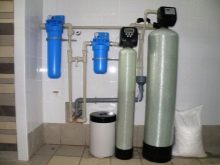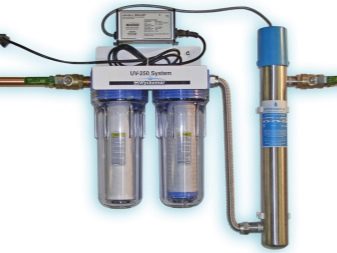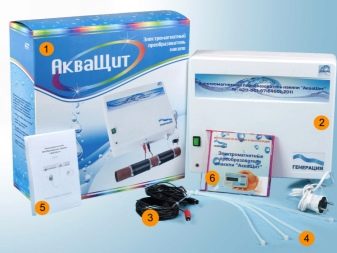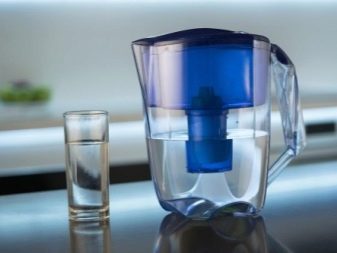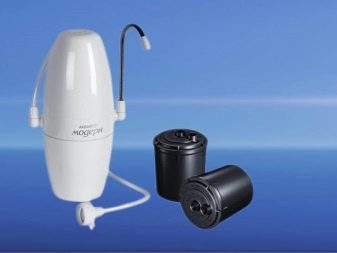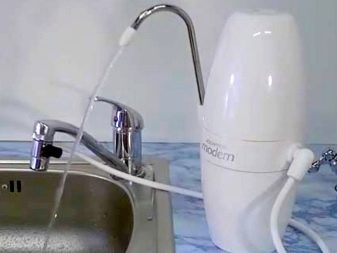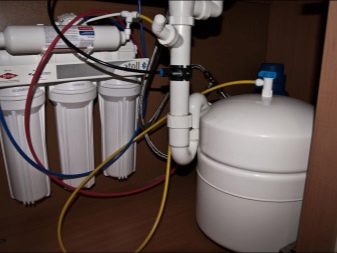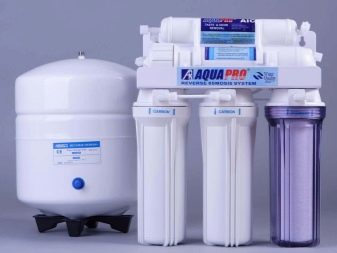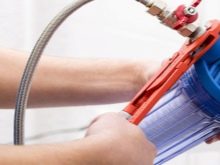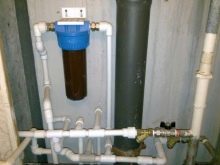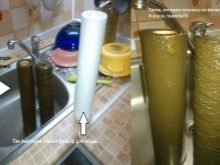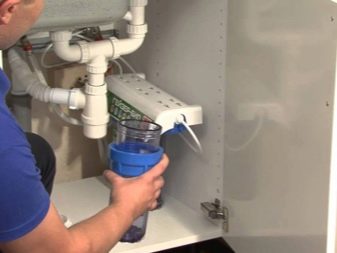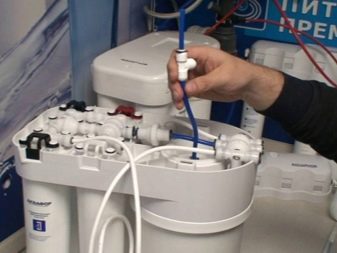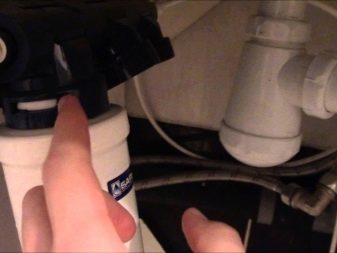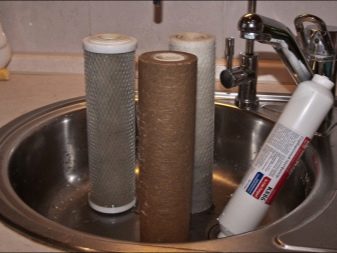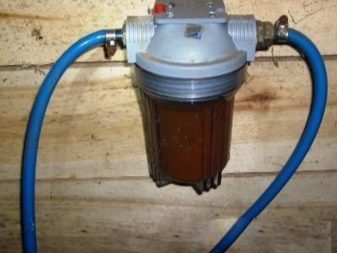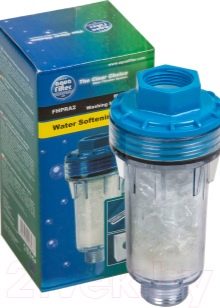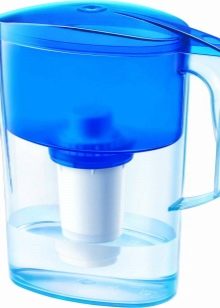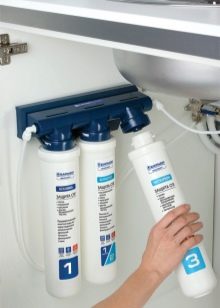Iron water purification: how and how can this be done?
Drinking water often has an elevated iron content. This phenomenon is accompanied by an unpleasant aftertaste, muddy shade and can harm health. To avoid consequences, it will be necessary to purify water from iron. Each person should know what and how to do it.
What is it for?
Iron is considered the most common metal. It is able to penetrate groundwater due to soil erosion. Metal particles have a small size and weight, so water easily transports elements to drinking sources. It is impossible to determine by eye the presence of iron in a liquid. However, if you try the water, you can feel the unpleasant metallic taste.
Excessive amount of metal in water is not only harmful due to unpleasant taste. Iron residues on dishes and plumbing contribute to the accumulation of rust, which is difficult to clean even with special means. Upon contact with washing machines and dishwashers, you may encounter scum, and the laundry gets red spots.
Also the presence of iron molecules in water can harm the human body. It is the development of problems with the cardiovascular, urogenital system, as well as a decrease in immunity.
Despite the fact that the water entering the apartments undergoes a serious cleaning process, it is not enough for a full result. To protect yourself and household appliances, it is recommended to install a filtration system. Special devices allow you to clean the liquid and reduce the risk of iron getting to the minimum mark.
Special features
If a system is installed for water treatment, the purification process itself consists of several stages.
- In the filtration system is the contact of water with an oxidizing agent. At this stage, the transfer of iron in the trivalent state, which is characterized by insolubility.
- Then the liquid passes under the required pressure.
- Due to the backwash function, all sludge is removed to the drainage system.
Special filters aimed at eliminating iron molecules are rarely used. They meet:
- on productions;
- in communal water supply.
Mineral Types
There are 4 states of iron molecules that can be located in a liquid.
- Colloid. This is the safest state, if we talk about the environmental component. Water containing such particles belongs to the category of medicinal mineral drinks. But to drink it on an ongoing basis is prohibited.
- Bivalent. Iron molecules are arranged in a liquid in the form of a fine dispersion. Due to the naturalness of the chemical process, the iron particles are washed out of the water, and after the process of settling they begin to settle to the bottom. If water flows from the tap, which is transparent and clean, and, after a certain period of time, acquires brown sediment, it means that it contains ferrous iron, which after some time will turn into ferric.
- Trivalent. Another name for such a state is coarse suspension.It is easy to determine: a yellowish-brown liquid will flow from the tap.
- Bacterial (containing iron bacteria). Such a metal is able to penetrate the water supply system if there are paint and varnish, metallurgical or chemical plants in the region.
When dumping toxic waste in a pond, metal in ionic form along with mercury, cadmium and lead can get into drinking water sources. Iron bacteria differ from mineral in that they look like a viscous and mucous sediment. Drinking such water is dangerous for health. To protect your apartment or private house from polluted water, you will need to install filters.
Removal methods
There are various methods that allow you to make water deironing.
Aeration
This is a reagent-free water treatment that uses oxygen saturation technology. During the purification, the bivalent iron particles are oxidized to trivalent and precipitate as sediment at the bottom of the tank. During aeration, a tank equipped with a compressor is used. It is mounted between the column and the well.
Anyone can create such a device with their own hands.The size of the tank should be selected on the basis of water flow. Dimensions should allow the liquid to settle, due to which it is saturated with oxygen. However, this method is optimal only if the water contains no more than 10 mg / l of iron.
Water treatment with manganese dioxide
This method is similar to the previous version. It uses a reaction that occurs between ferrous iron and manganese dioxide. In the course of the interaction, an insoluble compound is formed, which settles at the bottom.
In this embodiment, a column is used, where a manganese oxide compound is used as a filter. After some time, a precipitate forms in the membrane, which must be removed by itself.
Advantages:
- purification from hydrogen sulfide particles and other compounds occurs;
- high-quality removal of iron particles;
- long service life of the structure.
Catalytic water treatment
A catalytic filter for removing iron from water is aimed at transforming components into insoluble form. As a result of using the method, precipitation is observed, which should be removed. Reagents and consumable raw materials are not required.Before proceeding with the catalytic water treatment, aeration of the liquid will be required, since in the initial volumes there is a shortage of oxygen for full oxidation.
Chlorination
Such a method is concluded in the addition of chlorine or active chlorine-containing elements to the liquid. The most commonly used chlorine dioxide, chloramines or sodium hypochlorite. Since chlorine is among the strong and toxic oxidizing agents, this method has many drawbacks. During cleaning, the liquid can get a specific odor along with the formation of hazardous chlorine-derived products.
Ozonation
Ozone saturation of water is one of the most common methods of water purification from iron. The method is practically no different from other methods. The iron particles are oxidized to a water-soluble form, after which the precipitate falls to the bottom. As a result, users get water that is suitable for domestic use.
Benefits:
- instant water purification;
- liquid oxygen saturation;
- the destruction of bacteria.
Among the shortcomings are the following:
- high price;
- do-it-yourself installation of the system;
- there is a possibility that users may be poisoned by harmful substances;
- in some cases, ozone leakage is observed.
Ion exchange
To make water purification in this way, you will need a filter with ionic resins. They allow you to clear the liquid without the oxidation process. During cleaning, it will be necessary to completely eliminate the ingress of oxygen into the filtration system. This makes it possible to protect the equipment from ferric particles that can clog the filter.
With the help of reagents
This is a popular method of water purification in wells. The method is considered simple and affordable. Most users choose this option, since all actions can be done by hand. With the help of reagents, not only iron molecules are purified, but also chlorine components, as well as potassium permanganate.
The technique focuses on the use of iron bacteria. They do not bear harm to human health, compared with the products of their vital activity. The activity of bacteria is observed in the case when the level of iron content is at the level of 10-30 mg / l.As a result, iron bacteria are removed by adsorption and treatment of the fluid in the well with bactericidal rays.
Membrane cleansing
Membrane cleaning is enclosed in the operation of the microfiltration membrane, which holds the particles of iron. The operation of improved membrane filters allows you to clean the liquid from iron particles up to 98%.
However, this method has disadvantages:
- the filter quickly becomes clogged with iron;
- not everyone wants to drink distilled water.
This technique is often used in pharmacology to create drugs.
Purifying filters
Household cleaning systems operate according to a single principle, which consists in the conversion of ferrous iron due to the oxidative process to the trivalent state. Conversion occurs through the use of polymeric reagents or without them.
A similar distinction divides iron removers into two varieties.
- Reagent-containing. They use the oxidizing agent chlorine, ozone and manganese.
- Non-reagent. The oxidative process is produced by contact with oxygen,which converts iron to an insoluble precipitate.
Non-reagent filter elements are divided into two categories:
- charge type devices;
- aeration filters.
Varieties and working principle
The filling device is a sealed container in the form of a cylinder. The tank is filled with a substrate of a special type, which is responsible for absorption. Backfilling is most often an aluminosilicate sorbent that can catalyze an oxidative process.
Water is sent to the filter and when moving through the sorbent layer is saturated with oxygen. Due to this action, the iron particles undergo an oxidation process and are converted to the trivalent state. Then the iron in the form of sediment remains in the filter layer. Products have a disadvantage, which is concluded in the fact that during use decreases the amount of backfill. Therefore, it is necessary to periodically restore the original quantity.
Depending on the type of device used, the process can be carried out automatically or manually. Such filters are considered the best solution if your cottage or country house needs water purification against iron.
Aeration filters are equipment with which the liquid is artificially saturated with oxygen.
There are two types of aeration filters:
- pressure head;
- free-flow.
The difference is based on the fact that in the second type of devices the water is supplied to the working tank using nozzles. They are responsible for spraying incoming water flow. Pressure filters feed air into the tank under strong pressure. An automated compressor is responsible for the discharge process.
Household cleaners are divided into several varieties.
- Jugs. The principle of operation is based on the flow of water from one tank to another using a replaceable cartridge.
- Filter next to the sink. The device is located next to the sink and is connected to the common tap with a flexible type hose.
- Stationary device. Integrated into the plumbing system. On the sink there is a separate tap for filtered water.
Stationary filters are classified into two categories.
- Flowing. Used several degrees of purification.
- With reverse osmosis. The devices have a translucent thin membrane that passes only water through it.The remaining particles are discarded to a drain for sewage.
Electromagnetic filters are in demand, which are able to clean the liquid from iron, abrasive particles and other contaminants. They can purify water with high temperature and pressure, which makes them indispensable in chemical plants.
Pros and cons of cleaning
If we talk about the advantages and disadvantages of cleaning, we can distinguish several indicators that depend on the type of filtering devices.
Jugs
The advantages include:
- simplicity and ease of use;
- the equipment does not require connection to the plumbing system.
Disadvantages:
- low level of performance;
- a small amount of purified water at a time;
- short life of the cartridge.
Installed near the sink
Benefits:
- does not require an auxiliary tank for purified water;
- device mobility.
Among the shortcomings, users note:
- low level of efficiency;
- Mandatory connection and disconnection of the device;
- short duration of the resource.
Flow devices
Suitable only for liquids in which there is a low concentration of iron.
Reverse Osmosis Filter
Such devices are able to clean the liquid by 99%. Users can get completely clean water, in which there are no extraneous smells and impurities. The filter has a high cost, which is justified by quality work.
Causes of failure
The quality of the device depends on the complexity of the design and process. Many users are faced with the fact that the filters malfunction. To deal with problems, it is recommended to examine the common list of faults.
If the filter slowly draws water, check the following factors:
- cartridge clogging;
- shelf life;
- pressure level in front of the inlet diaphragm (if low pressure is observed, installation of a pump is required, for a high pressure reducer is needed).
When draining the clean water filter in the drainage system will need to check the following items.
- Four way valve. He is obliged to stop the flow of fluid if the valve is closed.
- Check valve Drainage of water into the sewer system should stop if the tank for filtered water is full.
- The pressure level is checked before the outlet membrane.
If the water has a specific flavor, the reason may lie in the following:
- liquid stagnation, you need to drain a few glasses of water or install a mineralizer;
- the cartridge was not replaced in a timely manner;
- hydraulic battery is not fully engaged;
- no new water enters the tank.
To increase the pressure in the crane, you will need:
- make adjustment of the tank;
- restore the pressure level.
Use: Precautions
Before starting operation, you need to check the service life of the filling type reagents. During use, chemicals accumulate on the surface of the device that could not penetrate the membrane pores. This layer prevents the cleaner from working, and water cannot flow freely.
Devices for protection are also removed, and the membrane is washed. Washing is carried out with a sponge under a slight pressure of water.
To exclude membrane modification, it is not recommended:
- disassemble the filter elements;
- purge with a hose or hose;
- wipe the element with a hard cloth;
- connect the membrane tube to the plumbing system.
You should not wait for the moment when the filter dries. He must pass the liquid, the amount of which is indicated in the technical documentation. If the stated rules are not followed, the filter stops performing the assigned tasks.
Criterias of choice
The choice of filtering device is based on the following indicators:
- the degree of purification from iron (in quantitative terms);
- required performance;
- equipment classification;
- method of replacing or regenerating sorbents;
- dimensions.
Based on these indicators, you can choose a filter that is best suited for the stated conditions.
Tips and tricks
Many users plan to build a cleaning system with their own hands.
For this you need to be familiar with the installation technology.
- In the attic is a cumulative tank.
- The supply of the first pipe with a spray at the end is from the well. Liquid flowing in a thin stream into the tank will contact with air masses and oxidize.
- The second pipe is designed to drain the purified liquid.It should be located on the other side of the tank, at a distance of approximately 20 cm from the bottom. The outlet is equipped with a coarse filter.
- A medium power compressor joins the tank.
- At the bottom of the tank mounted crane, which will be used to remove sediment.
Review the system of water purification from iron, see the video below.
